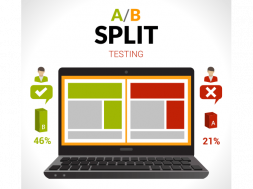
By Cat Vaughn, Vice President, Data Strategy & Analytics, Gragg Advertising
As you plan for the upcoming year’s program and marketing initiatives, enrollment volume and student growth is often a top priority. Gragg Advertising recently co-hosted a webinar with Gray Associates that explored the hot topic challenges of declining enrollment – along with possible solutions to maximize outcomes for your students and school.
During the webinar over 80 percent of attendees expressed a desire to start a new program within the next two years. Whether you are looking to launch a new program offering or fix and grow your existing programs, this article will give you a glimpse at best practices surrounding program analysis and planning. Let us assume for the moment you are among the group looking to bring a new program to your school.
Assessing new programs
A challenge all schools face when considering new programs is that every decision maker has a favorite.
With thousands of programs for consideration, you must first gather research to answer the real question: Is this program the best choice for my school?
It could be a great program, but it is more important to understand if it is appropriate for your specific market and institution. Additionally, every executive has his or her preferred market metric and source of data. Some may be concerned solely with graduate job opportunities while others are focused on regulatory constraints or local competition. The criteria from which you should pick, and what data you should assess, can be an added obstacle. We recommend breaking the data into four quadrants to aid in the decision making:
- Student demand
- Employment opportunities
- Competitive intensity
- Strategic fit
The following steps are a snapshot within this program evaluation rubric along with key questions you should ask in the new program planning process.
Step 1: Student demand – Are there enough students interested in the program?
There are several third party vendors in the market that can help you uncover student demand data specific to your programs and location. Many career schools have begun recording their student demand results in a central location per state. This is important when you’re trying to understand competition in a local market.
One popular data source includes Integrated Postsecondary Education Data System (IPEDS). However, this completions data often poses a challenge as it is typically a trailing indicator of what’s going on in the market. This is why we also encourage tracking inquiries with your marketing team or agency. A common misconception is that IPEDS only track completions for first-time degree seeking students. This is not correct. IPEDS completions data should include all completions for Title IV institutions. Once you identify a specific program of interest you can examine specific online search trends – which we will cover in a later section.
Step 2: Employment opportunities – Will there be jobs for graduates?
To understand what is going on the in labor market for graduates, the Bureau of Labor Statistics (BLS) forecasts are often used by schools.
It is important to note that as of 2015, 85 percent of BLS forecasts were off by 50 percent or more.
Instead, job posting trends are a reasonable indicator which can be collated across the internet. Referencing the BLS alone is not enough because pay varies widely and occupations do not always map back to the appropriate program.
Once you understand the employment trends you can look at the competition and examine the placement rates of your competitors. What will the landscape look like based on employer demand summaries from the BLS and other job posting sources? Employment opportunities will dictate the demand and possible impact of your program. Although you cannot guarantee job placement for graduates you can see which program would be more viable for your institution. Consult with your marketing team or agency and career team to find the best resources specific to your needs.
Step 3: Competitive intensity – How many programs exist in your area and are they a tough potential competitor?
With student demand and employment opportunities identified you can now drill down to the details of your competitors. Discover their number of completions, and how many completions per capita they have. Next, determine the overall search demand. To get an effective read on a competing program in the marketplace, review the paid search advertising, organic demand, and social interest. Get a read on your competitors and their online spend to help plan your marketing budget accordingly.
Step 4: Strategic fit – What is the right kind of program for your school?
Understand the data surrounding graduate wages and completion. Monitor these categories according to gainful employment requirements. Flag the categories that drop too low with a negative rating or score so you do not consider programs that may fail the gainful employment metrics.
The data may show it is a good program, but is it the best? Compare program data results from these four steps against every program and IPEDS in your desired city. This can be time consuming, but it is critical to the assessment process. After you review the program scorecard and compare it to your organization’s objectives, you will want to conduct a marketing demand assessment – different from an overall marketing strategy. After reviewing data in this four step rubric you can determine whether the new program would be viable to take to market.
Existing program marketing assessment
If you’re looking to grow current programs to solve the enrollment decline, we suggest starting with individual marketing evaluations of your existing programs.
A marketing evaluation will help you to understand if you have successfully advertised your program.
This takes into consideration the marketing channels you are utilizing, the audience or audiences you are speaking to and the overall strategy behind your initiatives. There are many specific questions you can ask yourself about your marketing strategy, such as: What is your online presence? E.g., how do you rank for your brand? How do you rank for non-branded terms associated with your school? Are you where your audience is? Do you have a strategy in place to target your audience effectively?
You are missing opportunities if you do not have campaigns optimized to match your prospective students’ needs.
Another area to examine is your brand’s social media presence and student engagement within an existing program. This helps ensure your advertising efforts are targeting their interests through the correct channels. You can leverage the relationship with your current students and alumni in your particular program to help re-engage prospective students who have not yet enrolled – especially if you have a high level of engagement. Consider social media strategies to get this group involved to help maximize your content’s reach. Remember to conduct a marketing audit of your current campaigns to help yield enrollment growth over time.
Key takeaways
In summary, we explored solutions of starting new programs or fixing and growing current programs to help your institution overcome the challenge of declining enrollment. This is only the beginning.
Whether you are looking to add new program or grow an existing program you will need a thoroughly crafted plan. Data and tools are available to aid in your program selection. Additionally, you should always couple data with marketing demand. Review online demand via paid search, organic and social media. Request inquiry projections across all marketing channels and implement a strong marketing strategy to help your program take off.
If you are simply looking to increase enrollment without adding a new program it is critical to start an efficient program audit. Some shrinking programs can grow – especially where competition fades. However, not every program will have the potential to grow. This comes down to what your market can support. Ask questions. Evaluate local demand, competition, employment, and wages to be sure the market can support growth. Work with an agency to find the data resources for your specific program needs. Implementing a proper marketing plan may be complex, but it is vital no matter what your goal is.
About Gragg Advertising and Gray Associates
Gragg Advertising has been providing marketing solutions for educational institutions since 1992, and has since developed proprietary marketing technology to maximize results for its clients. Gragg’s services span brand development, creative culture, inquiry aggregation, cross-platform media campaigns and interactive design, all while tracking performance to deliver measurable results. Gragg approaches each education client from a brand strategy viewpoint. Gragg knows that understanding and predicting consumer behavior applies as much to higher education as it does consumer goods. Aggregation, digital marketing and data science are at the core of Gragg Advertising’s methodology, with supporting philosophy ensuring that all work is done with the client’s best interest at heart.
Gragg partnered with Gray Associates, a leader in higher education consulting, to conduct this Program and Marketing Planning presentation. Gray Associates’ proprietary Program Evaluation System (PES) was built specifically for analyzing new programs and growing current programs for higher education institutions. Founded in 2002, Gray Associates has developed an industry-leading database that combines information on inquiry volumes, demographics, competition, and employment. Using this information and proprietary analytical techniques, Gray works with faculty and school leadership to develop institutional strategies, select programs, pick locations and prepare curricula.
CAT VAUGHN is the VP of Data Strategy and Analytics at Gragg Advertising. Her account management experience within the higher education industry has encompassed both ground and online schools—spanning over 100 campuses. She has worked to build strong client relationships and increase return on investment for all of her clients utilizing strategic planning and implementation.
Contact Information: Cat Vaughn // Vice President, Data Strategy & Analytics // Gragg Advertising // 816-931-0050 // cvaughn@graggadv.com // Social Media: https://www.facebook.com/graggadv/, https://twitter.com/gowithgragg, https://www.linkedin.com/company/gragg-advertising











